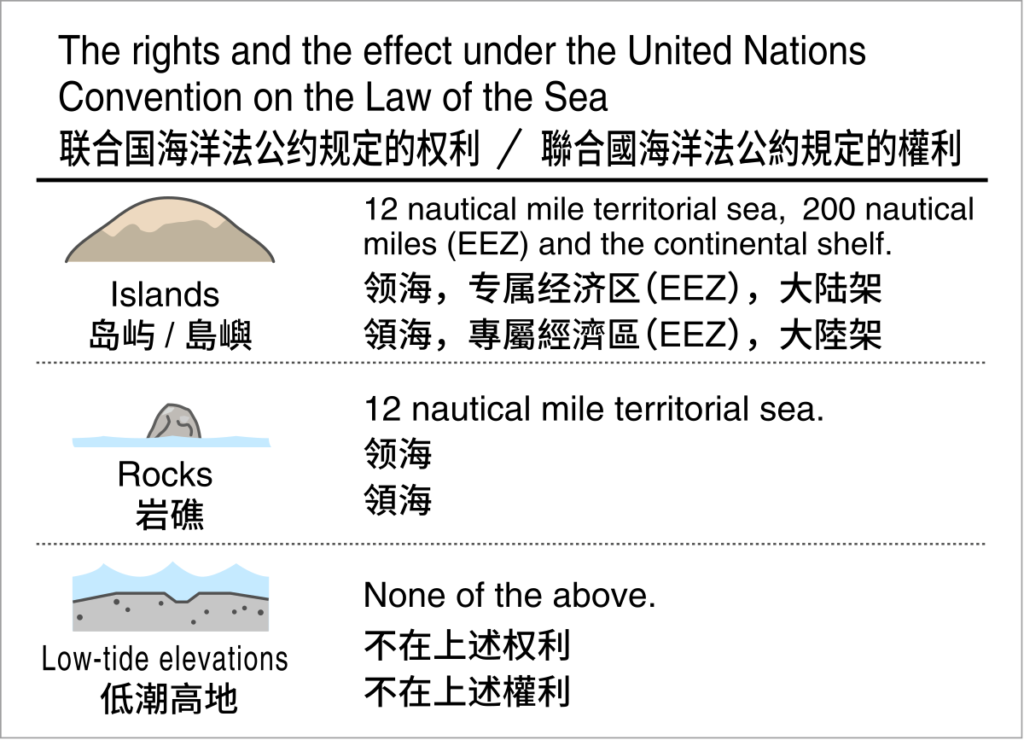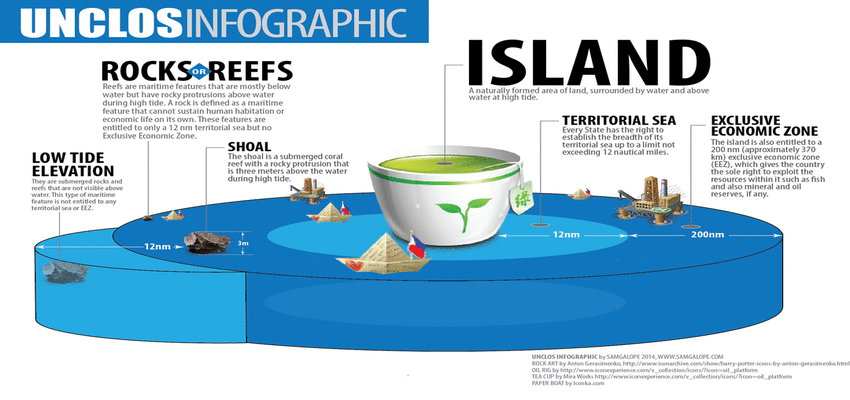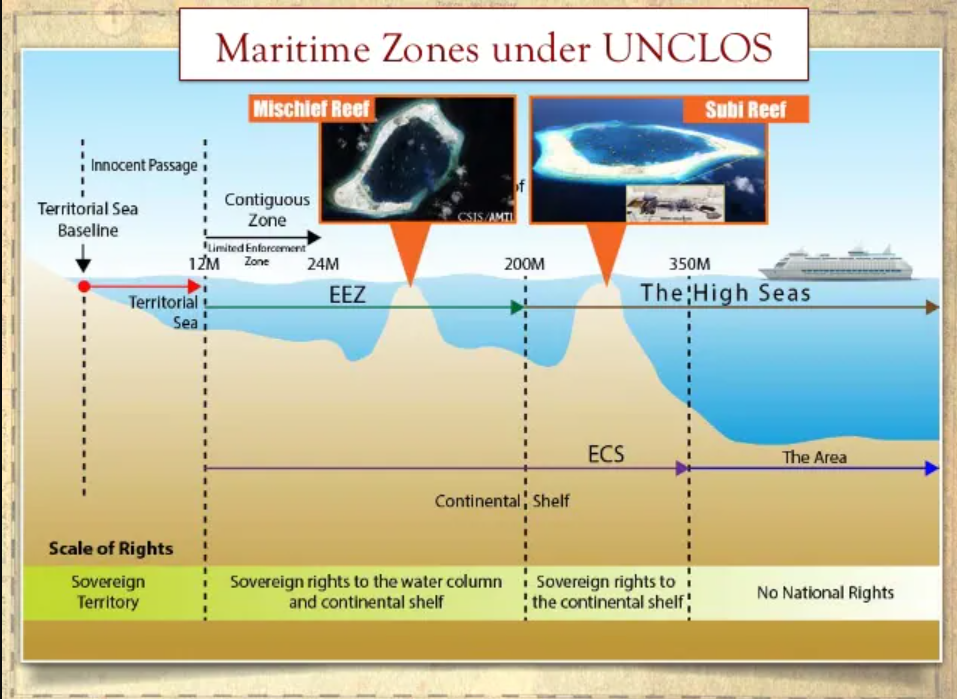The definition and treatment of islands in maritime boundary delimitation are complex and important. This is because the 1982 United Nations Convention on the Law of the Sea (UNCLOS), which came into effect in 1994, provides that islands, along with mainland coasts, may generate a full suite of maritime zones – including a 200 nm exclusive economic zone (EEZ) and continental shelf claim as well as a 12 nm territorial sea. Thus, if no maritime neighbours were within 400 nm of the feature, an island has the potential to generate 125,664 sq. nm [431,014 km2] of territorial sea, EEZ and continental shelf rights. There is also the consideration that oceans remain an important source of living resources, with fisheries representing a major industry for many coastal states.
Furthermore, offshore areas are an important source of non-living resources such as hydrocarbons, especially in the context of dwindling on-shore reserves, growing populations and improved technology allowing viable exploration and exploitation of offshore oil and gas resources in deeper waters further and further offshore.
The ability of small islands to generate extensive maritime claims explains the significance attached to them. Countries possessing islands and rocks have advantages denied to those possessing only a mainland. In most circumstances the possession of offshore islands and rocks allows more extensive claims than those based solely on the mainland, by claiming from those features or the straight baselines that join fringing islands.
The presence of outlying islands and rocks can assist one country to secure an advantage when a maritime boundary is delimited with a neighbour. For example, sovereignty over Aves Island was the principal factor in the advantageous maritime boundaries that Venezuela negotiated with the United States, the Netherlands and France in 1978 and 1980.
At the Third United Nations Conference on the Law of the Sea some countries sought to limit claims from remote islands and rocks that would significantly diminish the extent of the international seas and seabed available for the use of all countries. They pursued their aim in the debates dealing with Article 121 entitled the Regime of Islands. The outcome of this debate was an article, parts of which have been interpreted in diametrically opposed ways. Article 121 contains three paragraphs each one sentence in length. The first two paragraphs are almost free from ambiguity. The third paragraph has been the source of an extensive and unresolved legal and scholarly debate. This chapter reviews the origins and possible meanings of Article 121 and sets out steps by which governments can work through them to establish the best arguments to deal with islands and rocks that they or their neighbours possess.



